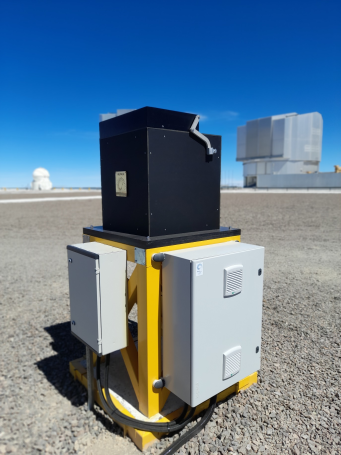News and Updates
Data Release of the MUSE Hubble Ultra-Deep Field surveys (AMUSED) mosaic cubes and catalogue
Published: 12 Apr 2023
ALPACA all-sky images from Paranal available in the Archive
Published: 06 Apr 2023
GRA4MAT Narrow Off-Axis Mode / First Observations of Beta Pic b
Published: 04 Apr 2023
Revised version of the UltraVISTA COSMOS2020 FARMER catalogue available
Published: 09 Mar 2023
Third Data Release from the Galaxy Clusters At Vircam (GCAV) ESO VISTA Public Survey
Published: 21 Feb 2023
First data release of the deep MUSE mosaic from the Large Programme 1100.A-0528
Published: 14 Feb 2023
Second data release of the XSHOOTER spectra from the Large Programme INSPIRE published
Published: 14 Feb 2023
New data release of MUSE data cubes of the Fornax3D Survey
Published: 25 Jan 2023
New data release from the APEX Large CO Heterodyne Outflow Legacy Supercam survey of Orion (ALCOHOLS) project
Published: 19 Dec 2022
Release of pipeline-processed high-resolution imaging data obtained with SPHERE/IRDIS
Published: 14 Dec 2022
« Previous
1
| 2
| 3
| 4
| 5
| 6
| 7
| 8
| 9
| 10
| 11
| 12
| 13
| 14
| 15
| 16
| 17
| 18
| 19
| 20
| 21
| 22
| 23
| 24
| 25
| 26
| 27
| 28
| 29
| 30
Next »
Showing 31 to 40 of 296 news

